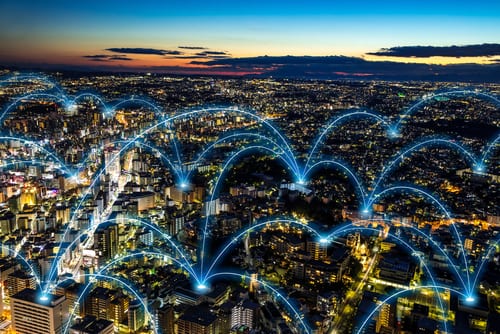So how will utilities – many of whom are either under PUC regulation or being undercut on prices by new retail providers – afford to keep up in this changing market? By pivoting away from high-cost generation plants and providing a modern grid.
 As the grid is modernized, two things will be top of mind for utility providers: fending off hackers and flexibility. In addition to replacing and repairing decades-old gas lines and transmission wires, it will mean updating software – as the Internet of Things expands, so do entry points for hackers. Likewise, the more interconnected infrastructure becomes, the more weak points there are for cyberattacks.
As the grid is modernized, two things will be top of mind for utility providers: fending off hackers and flexibility. In addition to replacing and repairing decades-old gas lines and transmission wires, it will mean updating software – as the Internet of Things expands, so do entry points for hackers. Likewise, the more interconnected infrastructure becomes, the more weak points there are for cyberattacks.
Updating software in a coordinated approach is where the smart money is going. Nearly 40 energy utilities spent $60 billion on grid improvements, while spending on new power plants fell to one-third of total capital improvements spending, according to the Edison Electric Institute. Even as investment in power plants shrinks, so does the demand for power – dropping to the lowest rate in a decade – and many utilities are shuttering obsolete plants instead of replacing them.
Some utilities have already begun charging modernization fees, although some PUCs have disallowed them – for now. Several have requested special ratemaking for grid investments, so this isn’t going away any time soon, but utilities will have to wait and see how it plays out in each PUC where they do business.
Although the reality is that rate increases will need to be made to make the grid safer and more resilient, some utilities are reducing increases to consumers by having third-party companies pay to offer new services to the grid.
As utilities work to make the grid safer, residents have begun to unplug. Even as the grid becomes safer and better equipped to deal with the surge and ebb of renewables, many utilities must find a balance in net metering between the wholesale rate they want to pay and the retail rate distributed generators want. Again, where PUCs fall on this issue will have an impact on utilities’ bottom lines – and their ability to modernize energy infrastructure.
Changing our country’s energy infrastructure won’t be quick, easy or cheap – nor will it extend to thousands of homes in need of electrical upgrades from weatherheads to service panels to wiring. As smart devices proliferate and renewables become more common, how will these systems fare?
HomeServe USA offers interior electric, hot water heater, HVAC and electric service line warranties that can keep your consumers safe from electrical hazards in their homes, protect them from unexpected expenses and give them peace of mind. For information on this turn-key program, contact us.

